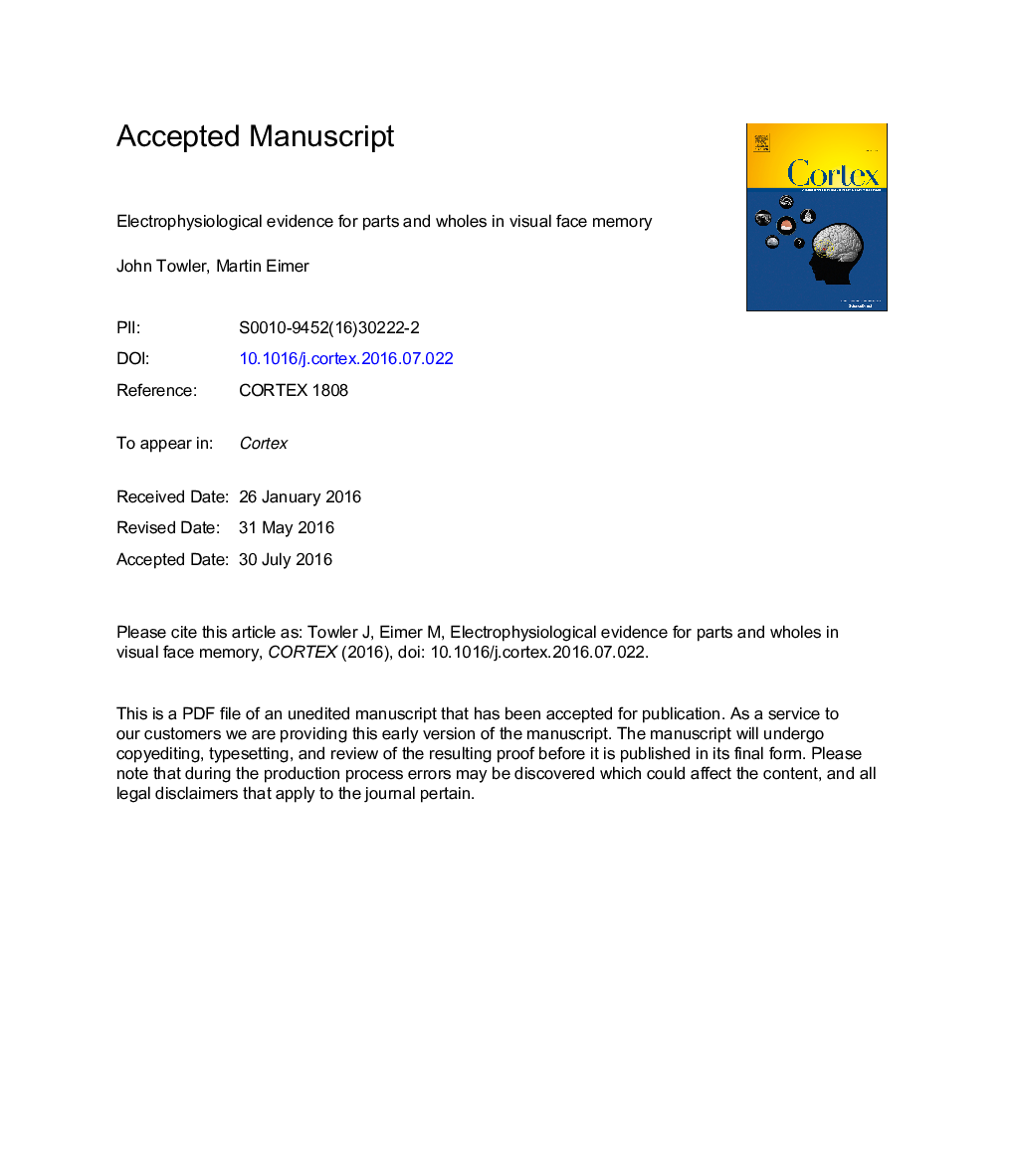| کد مقاله | کد نشریه | سال انتشار | مقاله انگلیسی | نسخه تمام متن |
|---|---|---|---|---|
| 7312624 | 1645029 | 2016 | 34 صفحه PDF | دانلود رایگان |
عنوان انگلیسی مقاله ISI
Electrophysiological evidence for parts and wholes in visual face memory
ترجمه فارسی عنوان
شواهد الکتروفیزیولوژی برای قطعات و کلیه در حافظه چهره بصری
دانلود مقاله + سفارش ترجمه
دانلود مقاله ISI انگلیسی
رایگان برای ایرانیان
کلمات کلیدی
موضوعات مرتبط
علوم زیستی و بیوفناوری
علم عصب شناسی
علوم اعصاب رفتاری
چکیده انگلیسی
It is often assumed that upright faces are represented in a holistic fashion, while representations of inverted faces are essentially part-based. To assess this hypothesis, we recorded event-related potentials (ERPs) during a sequential face identity matching task where successively presented pairs of upright or inverted faces were either identical or differed with respect to their internal features, their external features, or both. Participants' task was to report on each trial whether the face pair was identical or different. To track the activation of visual face memory representations, we measured N250r components that emerge over posterior face-selective regions during the activation of visual face memory representations by a successful identity match. N250r components to full identity repetitions were smaller and emerged later for inverted as compared to upright faces, demonstrating that image inversion impairs face identity matching processes. For upright faces, N250r components were also elicited by partial repetitions of external or internal features, which suggest that the underlying identity matching processes are not exclusively based on non-decomposable holistic representations. However, the N250r to full identity repetitions was super-additive (i.e., larger than the sum of the two N250r components to partial repetitions of external or internal features) for upright faces, demonstrating that holistic representations were involved in identity matching processes. For inverted faces, N250r components to full and partial identity repetitions were strictly additive, indicating that the identity matching of external and internal features operated in an entirely part-based fashion. These results provide new electrophysiological evidence for qualitative differences between representations of upright and inverted faces in the occipital-temporal face processing system.
ناشر
Database: Elsevier - ScienceDirect (ساینس دایرکت)
Journal: Cortex - Volume 83, October 2016, Pages 246-258
Journal: Cortex - Volume 83, October 2016, Pages 246-258
نویسندگان
John Towler, Martin Eimer,
